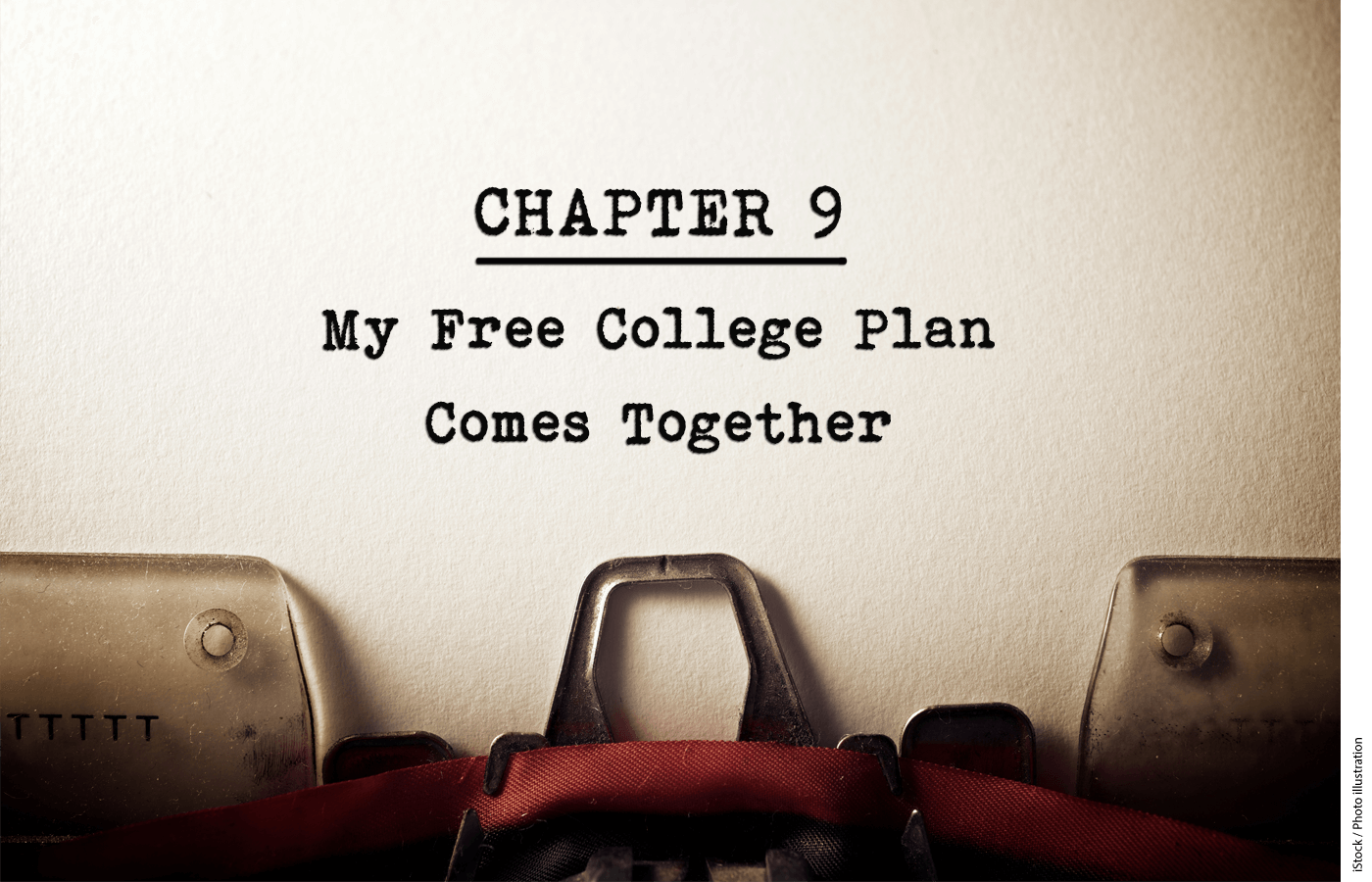
An Excerpt from Miguel Cardona’s best-selling memoir, Reign of Confusion: My Years of Making It Rain at the U.S. Department of Education (Berkshire House, 2028), pp. 143–144.
Chapter 9: My Free College Plan Comes Together
While pouring money on K–12 schools was a lot of fun, I’m proudest of the plan I devised to deliver “free college” on a scale that no one had previously thought possible.
The White House was still smarting from the collapse of Build Back Better. And some MAGA apologists in the press were claiming the $200 billion in K–12 pandemic aid hadn’t been well spent. So, we knew we wanted to avoid relying on Congress or being accountable for funds.
The president had me over to the Oval. He looked at me coolly, his youthful energy unmistakable. “Our people are angry. We need to give them more stuff,” he said. “Can you make free college happen? That would get all those Warren-lovers off my back!”
He paused. “Well? Can you do it?” he asked, his manly vigor evident in every word.
“Yes, sir,” I promised. “After all, I think it was Ronald Reagan who said, ‘We’re from the government, and we’re here to help.’ You can count on me.”
After the meeting, I talked to a senior White House aide. She shared her dream that, one day, government would get past this weird fixation on balance sheets. Her eloquence haunts me still. “I cry each and every night,” she said, “for the precious souls pressed into capitalist servitude as journalists, attorneys, and DEI trainers, their sacred selves disfigured by debt.” She insisted that I find a way forward. By the time I got back to 400 Maryland, I was fired up!
The White House made it clear that I’d have a free hand, so long as I kept harassing charter schools and making the teachers’ unions happy. And I took full advantage. Our senior staff said we didn’t have the votes to pass anything through Congress, thanks to those MAGA Republicans. And our lawyers said we didn’t have a legal path forward. That’s when I just cracked my knuckles and thought, “This is why I’m here.” It was time to use my old central-office guile.
We needed to bypass obstacles like Congress, law-making, and budgets. Over the next few weeks, a three-step plan took shape.
Step one: My team found a couple sentences in the 20-year-old HEROES law, written to give military personnel a break on student loans when they were deployed post-9/11. Well, we took those phrases, pretended they applied to the pandemic (which was still, totally, completely raging), and said borrowers wouldn’t have to repay $500 billion in student loans. MAGA Republicans sued, the MAGA Supreme Court had to stop us, and the game was afoot.
Step two: Once we’d planted the idea that we could give out free money, we set out on two parallel paths. We started “forgiving” borrowers on a piecemeal basis. A few billion dollars here and there didn’t seem all that newsworthy compared to our HEROES ploy, but it let the president keep sending emails to borrowers telling them he was giving them free money. (That made the president very happy.) Meanwhile, we rewrote Income-Driven Repayment to quietly turn student lending into a vast new entitlement, one that would eventually let us give away trillions of dollars without worrying about Congress or budgets.
Step three: Congress had ordered us to simplify the federal financial aid form (better known as FAFSA). If this worked too smoothly, there was a risk it might strengthen faith in the old-fashioned system. So, we dragged our feet rolling it out as long as we could and then, when we had to move, we made sure that nothing worked. All the while, we kept changing the rules on the loan servicers and blaming them for any headaches. By the end, only MAGA types still thought people should pay for college and that loans could or should be repaid.
Subscribe to Old School with Rick Hess
Get the latest from Rick, delivered straight to your inbox.
Our strategy worked like a charm. It left no money for something like an expanded Pell Grant, ensuring that Congress couldn’t address college costs in some boring, bipartisan fashion. It signaled that loan repayment was an unreasonable expectation, smashing the hoary, inequitable belief that students should pay for college. It encouraged students to borrow more money and community college students to become borrowers. And it infuriated those MAGA Republicans, making sure they wouldn’t compromise on something that might hem us in.
By the time I left office, we were on a glide path to free college in pretty much everything but name—for colleges private and public, for undergrads and graduates, for living expenses as well as tuition. Some observers said it looked like I was playing four-dimensional chess. When others said I seemed too confused for this to be any kind of purposeful master plan, I’d just smile and say, “Confused is as confused does.”
Today, I’m often asked how I got it done—how I poured new dollars into higher ed, boosted President Biden with his base, taught Americans to view student loans as a cash grab, and did it all without worrying about Congress or what the law said. My answer? “That was my job.” And it really was the job of a lifetime.
Frederick Hess is an executive editor of Education Next and the author of the blog “Old School with Rick Hess.”



